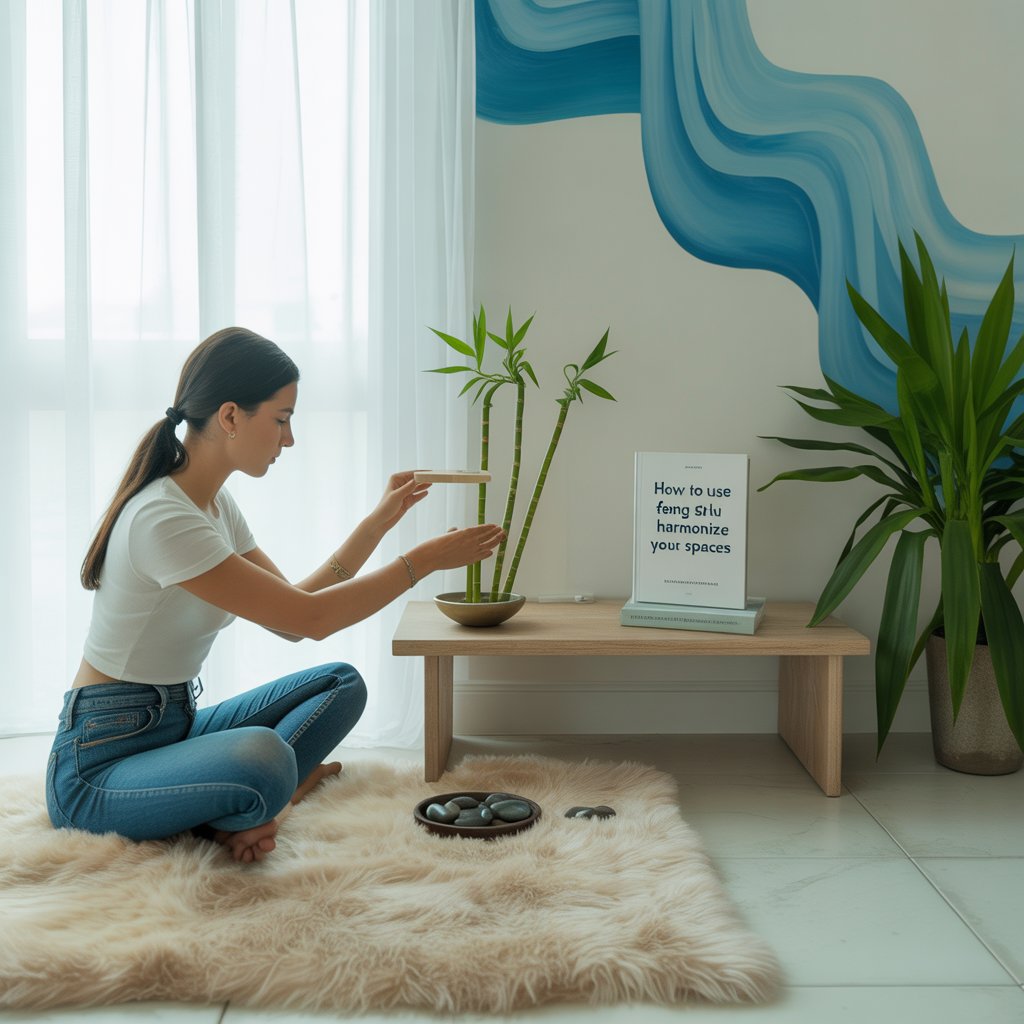Feng Shui is an ancient Chinese practice that focuses on creating harmony between people and their environment. By arranging furniture, colors, and elements in specific ways, Feng Shui aims to improve energy flow (known as Chi) in a space, promoting balance, well-being, and prosperity.
Applying Feng Shui principles in your home doesn’t require major renovations—it’s about making thoughtful choices that align with both function and energy.
Here are practical ways to use Feng Shui to harmonize your spaces.
1. Clear Clutter to Allow Energy Flow
Clutter blocks the flow of energy and can create feelings of stress or stagnation.
Tip: Regularly declutter rooms, closets, and even hidden areas like drawers. A clear space supports mental clarity and relaxation.
2. Create a Welcoming Entryway
The entrance is considered the “mouth of Chi,” where energy enters your home.
Tip: Keep the doorway clean, well-lit, and unobstructed. A beautiful mat, plants, or a mirror (not directly facing the door) can make the entry more inviting.
3. Balance the Five Elements
Feng Shui emphasizes five natural elements—wood, fire, earth, metal, and water.
- Wood: Plants, wooden furniture.
- Fire: Candles, lamps, warm colors.
- Earth: Ceramic objects, stones, earthy tones.
- Metal: Metal frames, sculptures, silver or gold accents.
- Water: Fountains, mirrors, blue tones.
Tip: Balance these elements in each room for harmony.
4. Position Furniture Thoughtfully
The placement of furniture affects how energy flows.
Tip: Place beds, desks, and sofas in a “command position,” facing the door but not directly in line with it. This arrangement provides a sense of security and control.
5. Use Mirrors Wisely
Mirrors reflect energy. While they can expand space and light, poor placement can disrupt balance.
Tip: Avoid mirrors directly facing beds or the front door. Instead, use them to reflect beautiful views or natural light.
6. Choose Calming Colors
Colors influence mood and energy.
- Blue/green: Calm and healing.
- Red/orange: Energy and passion.
- Yellow: Optimism and warmth.
- White/gray: Clarity and focus.
Tip: Select colors based on the energy you want in each room.
7. Enhance the Bedroom for Rest
Bedrooms are vital for relaxation and intimacy.
Tip: Place the bed in command position, avoid electronics, and use soft, calming tones. Symmetry with nightstands and lamps on both sides creates balance.
8. Maximize Natural Light and Airflow
Good energy requires fresh air and natural light.
Tip: Open windows regularly, use sheer curtains, and add plants that purify air, such as peace lilies or snake plants.
9. Add Symbols of Abundance
Objects can represent prosperity and positive energy.
Tip: A bowl of fresh fruit in the kitchen, a flowing water fountain, or healthy plants symbolize growth and abundance.
10. Trust Your Intuition
Feng Shui is not only about strict rules but also about how a space makes you feel.
Tip: Notice which arrangements make you feel calm, energized, or stressed, and adjust accordingly.
Final Thoughts
Using Feng Shui in your home is a way to connect with your surroundings and create harmony between your space and your lifestyle. By decluttering, balancing elements, and positioning furniture mindfully, you can encourage positive energy and well-being. A harmonious home can lead to greater peace, productivity, and happiness.
